In a remarkable turn of events, Dutch automotive enthusiasts recently had the opportunity to test and explore a piece of Saab’s history that had been hidden away for over fifty years. This unique Saab prototype, the Saab 98, resides in the Saab Museum in Trollhättan, Sweden.
Our journey takes us into the heart of this prototype’s fascinating story, a car that held immense promise on paper but never saw the light of mass production. Join us as we delve into the account of the Saab 98, brought to life by the dedicated Dutch journalists from Autoweek, who embarked on a mission to uncover the mysteries behind this hidden gem.
Table of Contents
- 1 The Awakening
- 2 Italian Craftsmanship
- 3 A Crossroads in Saab’s History
- 4 The Vision of the Combi Coupé
- 5 The Influential Figures: Björn Eric Lindhs and Gunnar Larsson
- 6 A Crossroads in Saab’s History
- 7 The Saab 95 Transformation
- 8 Saab 95, Model Year 1974
- 9 Mystery Surrounding the Saab 98 Prototype
- 10 In Retrospect: A Resurrected Legacy
The Awakening
The Saab 98, a relic of the past, awakens from its slumber in a rather dramatic fashion. The starter motor strains, and the engine initially resists, filling the old factory hall with a symphony of sounds. These sounds evoke memories of Saab’s first two-stroke engines, the very type that powered Saab’s early models from 1949 to 1967.
However, the source of this unique auditory experience is none other than a Ford V4 engine. This engine, once the powerhouse of Saab’s enduring model range (92/93/96/95) during the late 1960s, marked a significant step forward in terms of performance and technology.
Moreover, the Saab 98 boasts a completely redesigned rear end, originally envisioned for production in 1973. It’s a story that has been shrouded in mystery for far too long, as this remarkable prototype spent years tucked away in a corner of the Saab Museum.
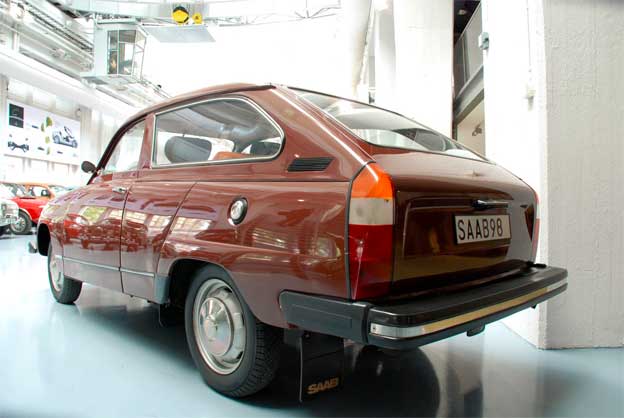
Italian Craftsmanship
The Saab 98 prototype was the result of a collaboration with Carrozzeria Coggiola, an Italian car body manufacturer situated near Turin. This unique partnership, which holds hidden treasures in the realm of Saab history, remains relatively unknown to many Saab enthusiasts.
It was a creative melding of Swedish ingenuity and Italian craftsmanship. The Italian influence was evident in the prototype’s distinctive design, creating a stunning and unique Saab that stood apart from its contemporaries.
A Crossroads in Saab’s History
In the late 1960s, Saab faced a pivotal moment in its history. With limited financial resources at their disposal, the company had to make a critical decision. Some within Saab believed that these resources should be allocated to the development of the Saab 99.
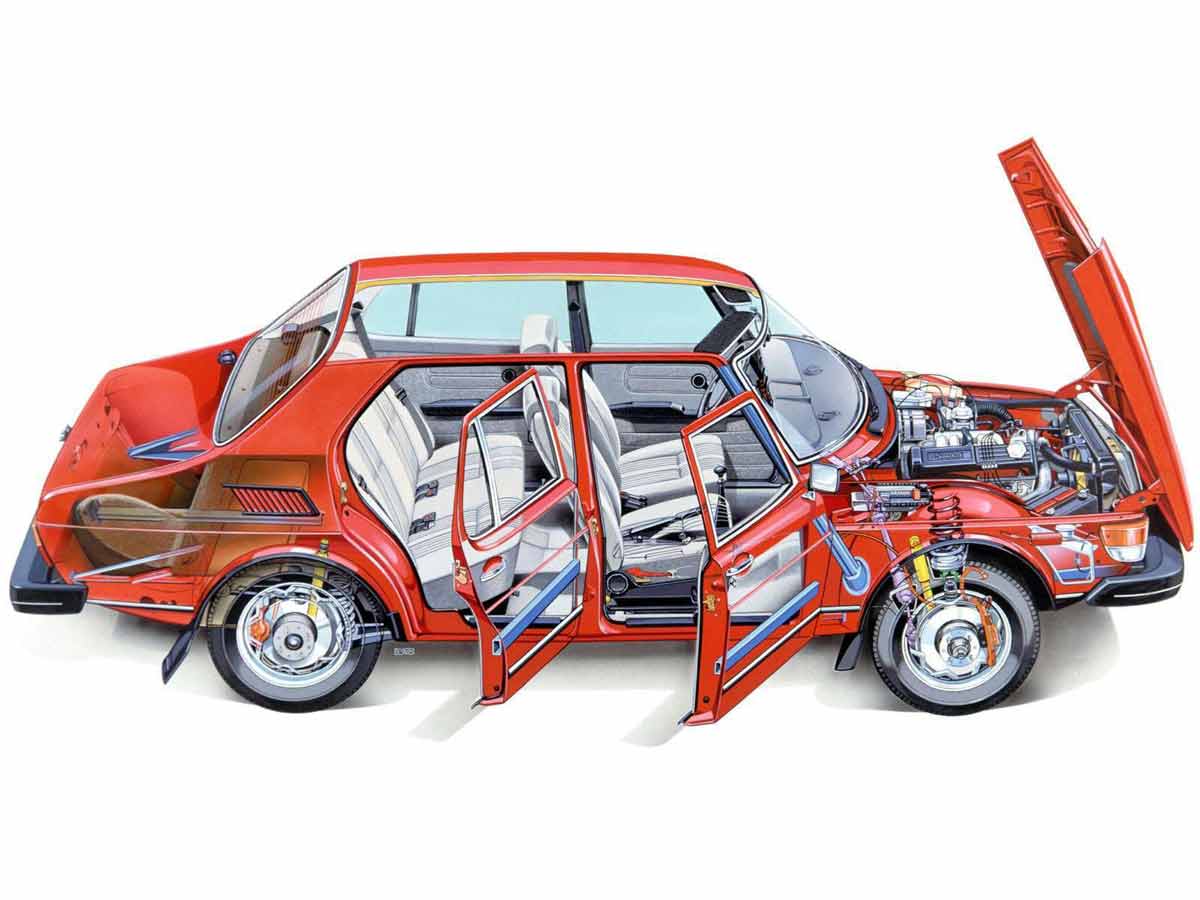
Others argued that the production of smaller Saab models could continue without significant investments, emphasizing the need for an affordable entry-level model. The latter group’s viewpoint ultimately prevailed, possibly due to Sweden’s propensity for seeking compromises. It’s worth noting that in Sweden, saying, “That could be an option,” often conceals a polite form of rejection.
The Vision of the Combi Coupé
As Saab embarked on developing the larger Saab 99, designer Sixten Sason envisioned a body style with a slanted and sportier rear. This vision led to project X14, a promising initiative. In 1973, the Combi Coupé based on the Saab 99 made its debut. This model would serve as a blueprint for a potential modernization of the aging Saab 96. The primary focus of this endeavor was on the rear section of the car, with the intention to retain the technology, including the chassis and drivetrain of the Saab 95 (the station wagon version of the Saab 96).
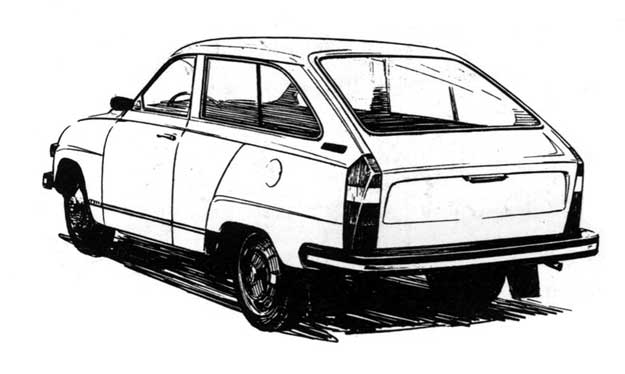
The Influential Figures: Björn Eric Lindhs and Gunnar Larsson
Björn Eric Lindhs, an automotive historian, played a pivotal role in unraveling the mystery surrounding the Saab 98 prototype. In his book ‘Saab – Bilarna de första 40 åren,’ he shared crucial insights and a rare photograph of the Saab 98, painted in vivid orange with matte black stripes on its sides. This photograph provided a valuable glimpse into the Saab’s history, which otherwise might have been lost to time.

Gunnar Larsson, a key figure in Saab’s history, had an unexpected connection to the Saab 98. As the vehicle was initially registered to Saab’s passenger car division, it eventually landed in the hands of Gunnar Larsson, who would later become Saab’s technical director. His association with the Saab 98 added another layer of intrigue to the car’s journey. Gunnar’s story of briefly owning the Saab 98 before it embarked on its transformation is a testament to the unexpected turns that often define automotive history.
A Crossroads in Saab’s History
As the late 1960s rolled in, Saab faced a critical juncture in its history. The limited financial resources at hand required a momentous decision. Some within Saab advocated channeling these resources into the development of the Saab 99. Others argued for the continued production of smaller Saab models, emphasizing the need for an affordable entry-level model. Eventually, the latter group prevailed, possibly due to the Swedish inclination for compromise.
The larger Saab 99, under the guidance of designer Sixten Sason, envisioned a sleeker and sportier rear end. While conventional station wagon plans were on the table, they eventually opted for the slanted rear of the Combi Coupé, known as project X14. In 1973, the Combi Coupé based on the Saab 99 made its grand entrance, serving as a potential template for the rejuvenation of the aging Saab 96. The primary focus was to modernize the rear section while retaining the technology of the Saab 95, the station wagon version of the Saab 96.
The Saab 95 Transformation
Following the completion of the Saab 99 in 1967, designer Sason’s successor, Björn Envall, took on the challenge of creating a Combi Coupé version of the smaller Saab model. Simultaneously, industrial designer Aribert Vahlenbreder was tasked with providing a concrete proposal. In his archives, he discovered a sketch of a Saab 95 with a new roof, elongated rear side windows, upright rear lights, and a substantial rear hatch. This sketch was dated September 3, 1973.
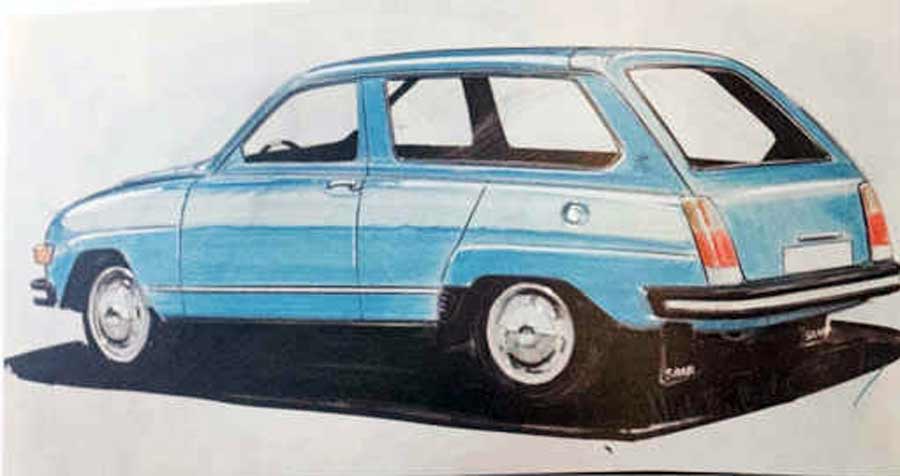
Saab 95, Model Year 1974
Just two days later, a polar white Saab 95 from the model year 1974 was registered, with Saab’s passenger car division listed as the initial owner. To trace the car’s journey, discussions were held with three Saab history icons. The car ended up in the hands of Gunnar Larsson, who would later become Saab’s technical director. However, at the time, he had no idea that his new Saab 95 would play a significant role in this historical narrative.
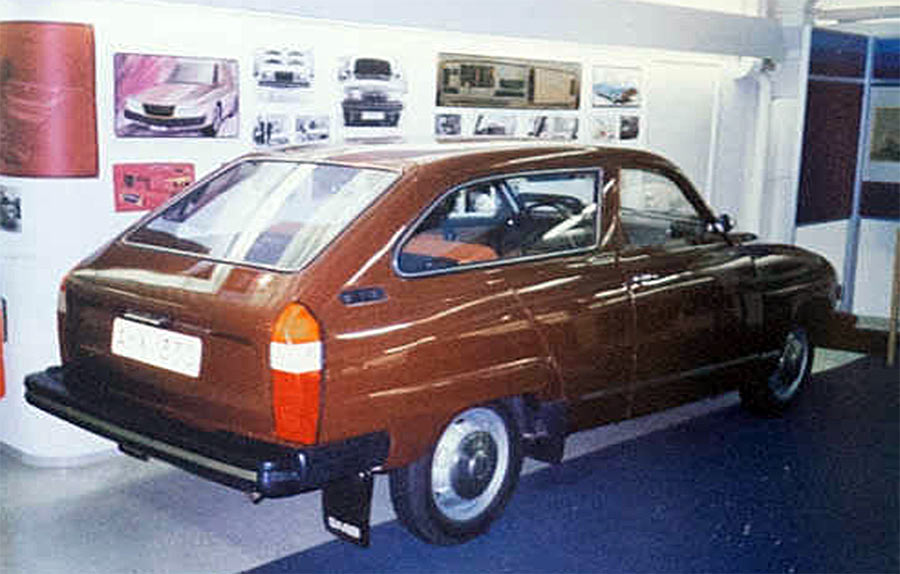
Mystery Surrounding the Saab 98 Prototype
The Saab 98 prototype’s story remains shrouded in mystery, leaving many questions unanswered. It’s unclear who made the decision to build and later abandon the project, and the reasons behind this choice. Regrettably, there are no surviving records detailing the thoughts of the directors of that era. The individuals who made these crucial decisions have since passed away. It’s plausible that the Saab 99 took priority during those years, while some argue that the Saab 98 was considered a ‘bastard’ due to its Italian design and outdated technical underpinnings.
The Saab 98 prototype is a fascinating relic from Saab’s history. It is a testament to the challenges faced by an automaker striving to adapt to a rapidly changing automotive landscape. The 98, with its unique design and Italian influence, may have pushed the boundaries a bit too far for Saab at the time.
In Retrospect: A Resurrected Legacy
As our exploration into the Saab 98 prototype comes to an end, one can’t help but appreciate the harmonious impression it leaves. While it may not be the epitome of modernity, this unique piece of Saab’s history deserves a moment in the spotlight. The story of the Saab 98 is a reminder of the complexities and uncertainties that have shaped the automotive industry over the years. It’s a piece of history that deserves to be cherished and celebrated.








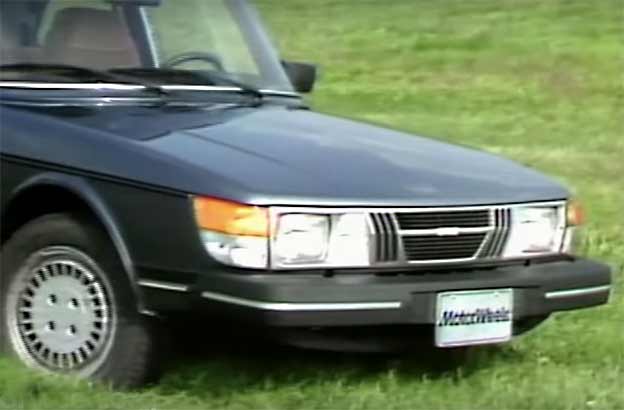



It is a very unique story about Saab 98. I myself am very interested in cars but never heard about this car. I also live in Sweden ❤️ lol 😀.
Were the 92 and 93 powered by the Ford V4? And why were the journalists expecting the two-stroke??
The 98 has been mentioned in several books and I remember seeing it in the museum in 2000…. So not exactly a secret is it?
Saab would have done well to sell that as an updated 95
The 95 was NOT the estate version of the 96.. a) it was a distinct model and b) it was launched one year prior to the 96. The original 95 was the estate version of the 93B while the 96 was a development of the 93F (the last model year of the 93 which had a single windscreen pane and front-hinged doors, so only the rear changed for the 96. The 93B and 1959 95 had rear-hinged doors I believe.
To Micke Samuelsson > The SAAB-Lancia story is sadly a story lived too short… The model was basically Lancia Delta – a car with it’s Fame & Glory days were only yet to come in the near future in the car racing world.
TO Micke Samuelsson >
I remember… Luckily the plans fell apart, as you may know Ford has owned Mazda”s shares during the decades in various amounts and released many “Fords” basing on the Mazda- platforms & mechanics and not very succesfully. The situation compared with using the Vectra-based platform in that day was totally different: Saab was not anymore an independent carmaker, but owned by GM with not much to say for anything (search for The Top Gear episode where Jeremy Clarkson addresses of this issue), but still Saab engineers made many things (without informing the GM management), that improved the Vectra-platform to a whole new level (which wasn’t not even a big effort for the Saab engineers to achieve) – much closer up-to-date to meet Saabs own level.
Unfortunately it was eventually GM which “killed” SAAB.
In the same time GM was involved with Alfa Romeo and GM made Alfa to use a GM platform (for the Alfa 159) which the Alfa engineers saw as a low-par plarform give up from the Alfa V6-Busso, in favor of the GM V6 which was way more inferior compared with the V6-Busso…GM acted like a pest and spread their inferiority to cover basically all the Alfa models at The moment, andbthen suddenly retrested back, saying “we’re not interested”…basically needless to say, that the GM-collaboration Alfas were not what the Alfa management & the buying customers were not very pleased to.
TO Pasi Lehtinen >
Owned three 900NGs and although Saab did what they could, there was definitely room for more improvement of the platform. The handling left a lot to be desired. And one basic thing – the platform was so narrow Saab initially couldn’t fit a hydraulic clutch … They should have added 8–10 cm width to make the 900NG properly roomy.
Sure, the General pulled the plug, but without the US billions Saab’s car production would have ceased already in 1990 or 1991. The General bought a seriously ailing car maker with a great history and totally failed to turn it into a credible premium brand. It was more or less impossible when all Saab got was second or third rate stuff from the GM shelves. And no four wheel drive.
TO Micke Samuelsson > I agree – if you mean the GM-V8 & V6-engines – The SAAB’s own V8 would have been exactly the right choice in true Saab-spirit. Concerning the SAAB’s own V8, Gillbrand was just too shortsighted and biased because his Turbo-engine achievements, he had always in somekinda conflict with everything coming from Finnish Uusikaupunki-division and this time he forgot to take it positively that the Finnish Saab V8 was specificly designed around his Turbo4 design, so in effect he slipped on the jealous-side.
From SAAB’s point of view I can see how something that might have squeezed a few more years life out of the 95/96 line could have been an attractive proposition, probably best they didn’t follow through in the long run though. It was sad that apart from the weirdness of the ‘SAAB 600’ they never had another model in this market segment though.
But still with some changes be nice looking car than Teslas 😆
The rear looks like a blend of french , italian and german ….😁
Could have been a good Trabant